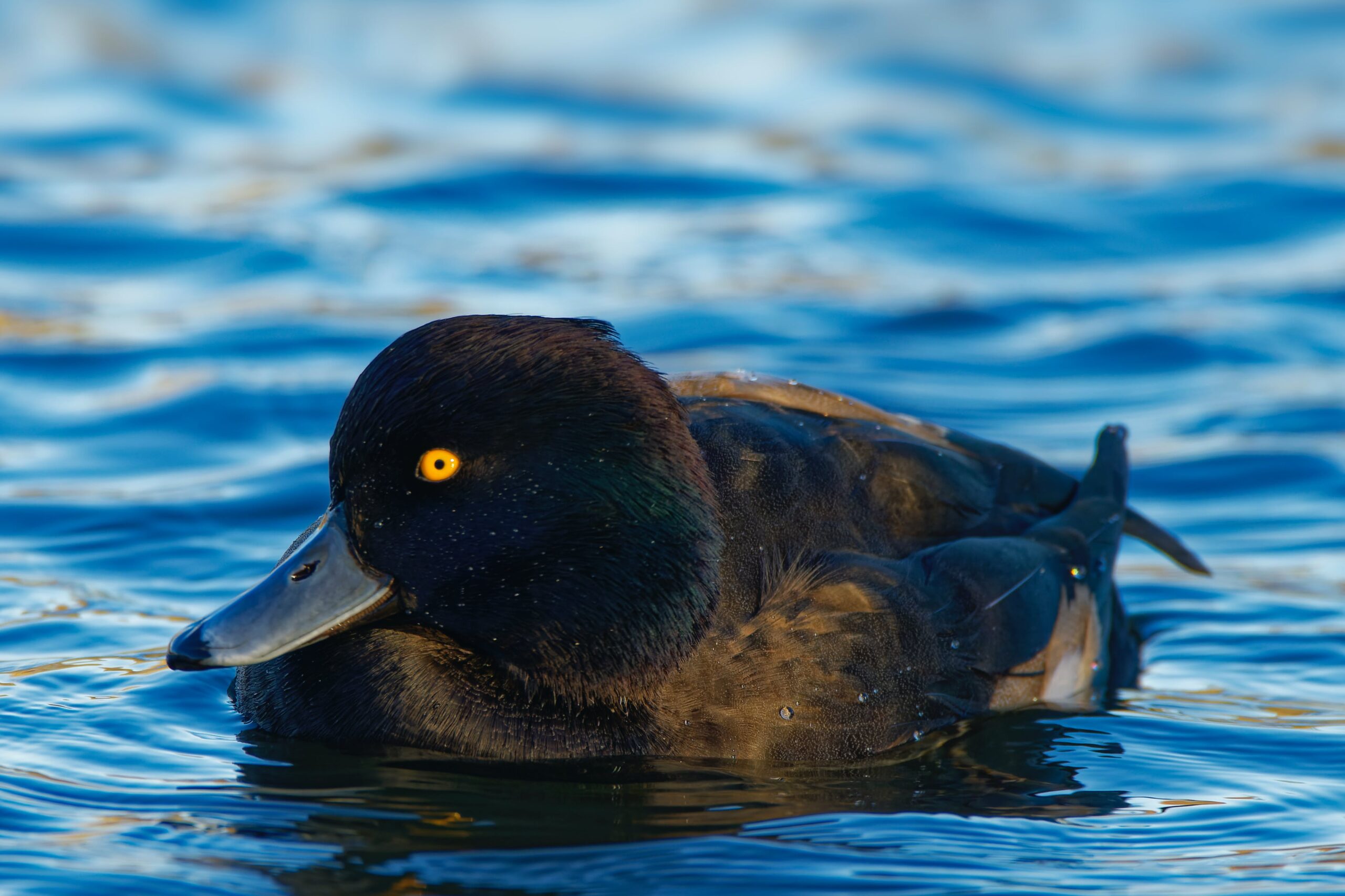Introduction: Meet the Tufted Duck, the Master of Diving and Feeding Techniques
The Tufted Duck (Aythya fuligula) is a medium-sized diving duck that is widely distributed across Europe and Asia. It is known for its exceptional diving and feeding abilities, making it a fascinating species to study. In this article, we will explore the anatomy and adaptations of the Tufted Duck, unravel its diving techniques, understand its feeding habits, examine its social dynamics while feeding, and discuss the conservation challenges faced by this remarkable bird.
Anatomy and Adaptations: Exploring the Unique Features of the Tufted Duck
The Tufted Duck is easily recognizable by its striking appearance. It has a black body, white flanks, and a distinctive tuft of feathers on the back of its head. This tuft gives the bird its name and is more prominent in males than females. The tuft serves no known purpose but is believed to be a sexually selected trait.
One of the most remarkable adaptations of the Tufted Duck is its ability to dive to great depths. Its streamlined body, webbed feet, and strong wings allow it to propel itself underwater with ease. The Tufted Duck can dive up to 10 meters (33 feet) deep and stay submerged for up to 30 seconds. Its dense bones and specialized air sacs help it control buoyancy and navigate underwater obstacles.
Diving Techniques: Unravelling the Secrets of the Tufted Duck’s Subaquatic Skills
The Tufted Duck employs various diving techniques to catch its prey. It often dives headfirst, disappearing beneath the water’s surface in an instant. It uses its wings to propel itself underwater and its webbed feet to steer and change direction. The Tufted Duck can also perform shallow dives, known as dabbling, where it partially submerges its head and neck to feed on aquatic plants and invertebrates near the water’s surface.
Feeding Habits: Understanding the Tufted Duck’s Diet and Foraging Strategies
The Tufted Duck has a diverse diet that primarily consists of aquatic plants, seeds, and invertebrates. It feeds by diving and foraging underwater, using its serrated bill to filter out small invertebrates and plant matter from the water. It is also known to feed on molluscs, crustaceans, and small fish. The Tufted Duck’s ability to adapt its diet to the available resources in its environment allows it to thrive in a variety of habitats, including lakes, rivers, and coastal areas.
Competition and Cooperation: How Tufted Ducks Navigate Social Dynamics while Feeding
Tufted Ducks are often found in large flocks during the winter months when food resources are scarce. In these flocks, they exhibit complex social dynamics while feeding. Competition for food can be intense, with individuals jostling and diving simultaneously to secure their share. However, Tufted Ducks also display cooperative behaviours, such as forming feeding lines or circles, which help them efficiently exploit food patches. These cooperative behaviours reduce aggression and increase foraging success within the flock.
Conservation and Threats: Examining the Challenges Faced by the Tufted Duck Population and Conservation Efforts
The Tufted Duck population is generally stable, but it faces several conservation challenges. Habitat loss and degradation due to urbanization, pollution, and climate change pose significant threats to this species. Additionally, hunting and egg collection in some regions have impacted local populations. Conservation efforts focus on protecting and restoring wetland habitats, implementing sustainable hunting practices, and raising awareness about the importance of preserving the Tufted Duck’s habitat.
In conclusion, the Tufted Duck is a master of diving and feeding techniques. Its unique adaptations, such as its streamlined body and strong wings, enable it to dive to great depths and catch its prey underwater. Its diverse diet and foraging strategies allow it to thrive in various habitats. While competition for food can be intense, Tufted Ducks also exhibit cooperative behaviors to maximize foraging success. However, conservation efforts are crucial to address the threats faced by this remarkable bird and ensure its long-term survival.

